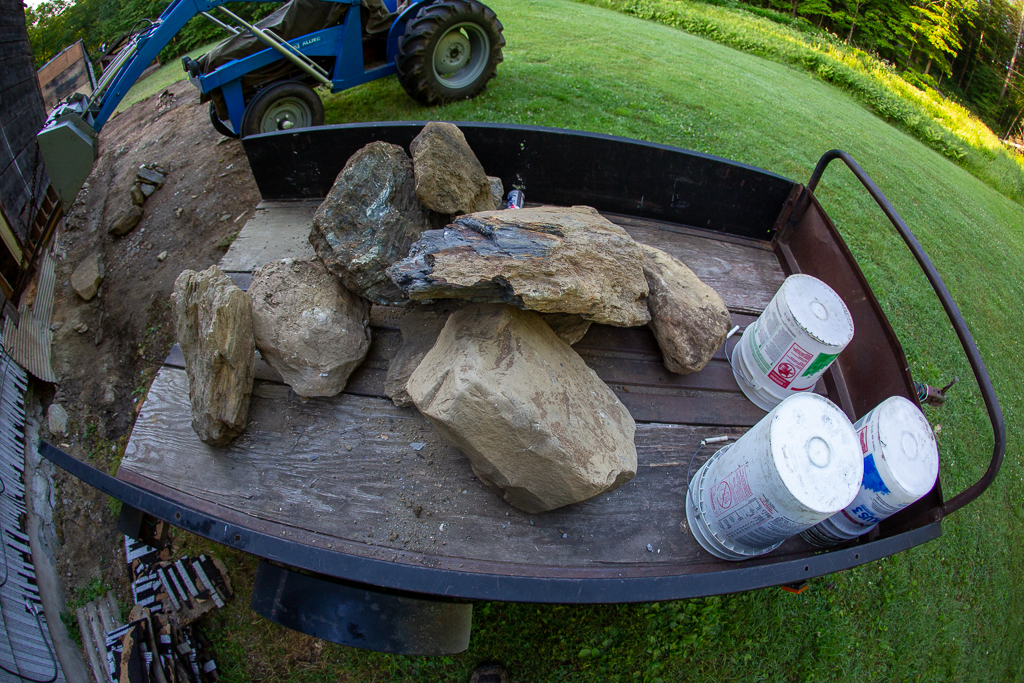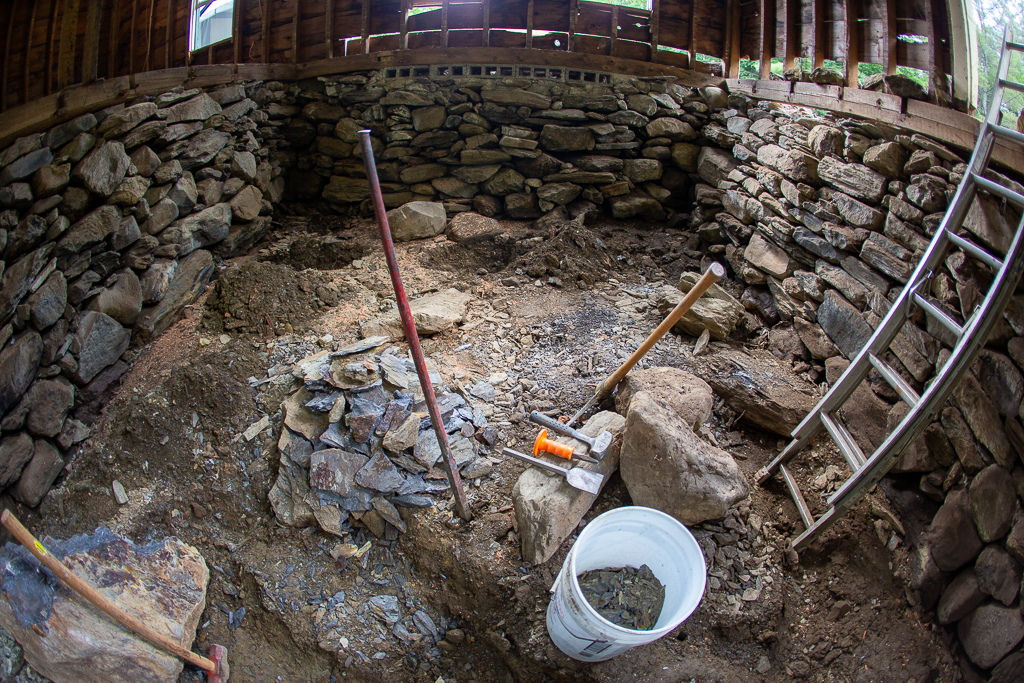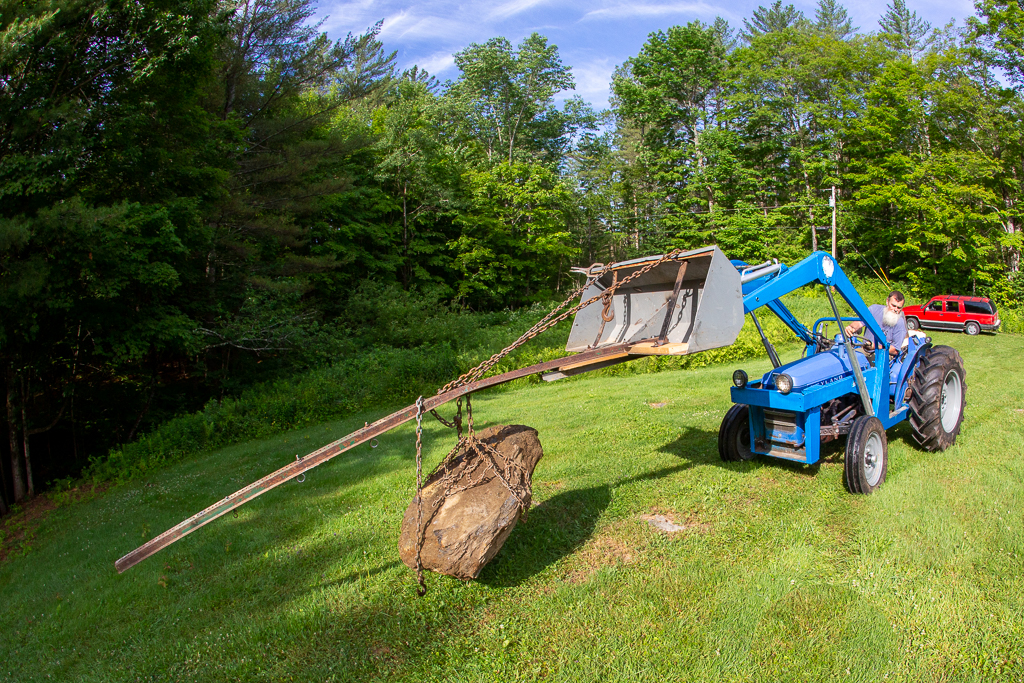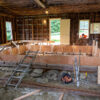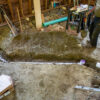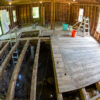Removing floors
Getting water out of the cellar has been taking longer than expected. We’d hoped the cellar floor would dry out more after we detached the shed and screened-in porch, but no. We pulled up floor boards over the dirt side, but waited to pull up floor boards over the cellar so we could remove all the second floor materials (without having it fall into a cellar hole) and still have access to the shed where tools and equipment are stored.
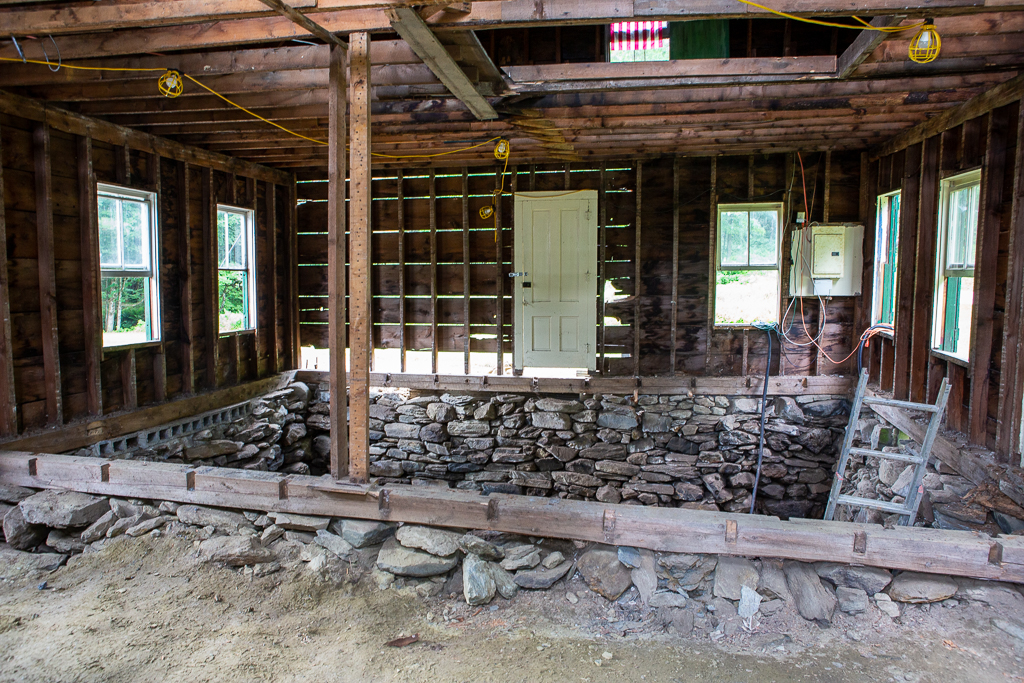
Pulling up the floor joists provides a clearer view of the floor and it also helps things dry out faster. The stones are staying in place, but the west side facing the town road has developed a potentially troublesome roll. In the photo above, the rear left corner of the house is almost nine inches lower than the right corner. The cinder blocks (visible in a line below the two windows on the left in the photo above) serving as vents are actually slightly below ground level and this seems to be where much of the snow melt and rain has been getting into the cellar.

Removing rocks and debris from the cellar floor is hard work. We fill five-gallon buckets with bricks, crumbling cinder blocks, rocks, and even the skeletal remains of a porcupine (who knows how it got in there). We use a sledgehammer and pickaxe, along with various smaller wedges and hammers, to break up the largest rocks. In the photo above, most of what remains on the floor are rocks too heavy for us to lift out of the hole. The plan is to dig a hole beside each large stone, flip the stones into the hole, and then bury them.
When the builder stops by to check up on us, he is either surprised at our progress or has decided to do something different because he has devised a method for removing the remaining rocks instead of burying them. Using the tractor, some snow tire chains, and a steel street sign pole, we life the large rocks out one at a time. The largest rock, dangling from the tractor bucket in a photo above, was estimated at 700 to 800 pounds.
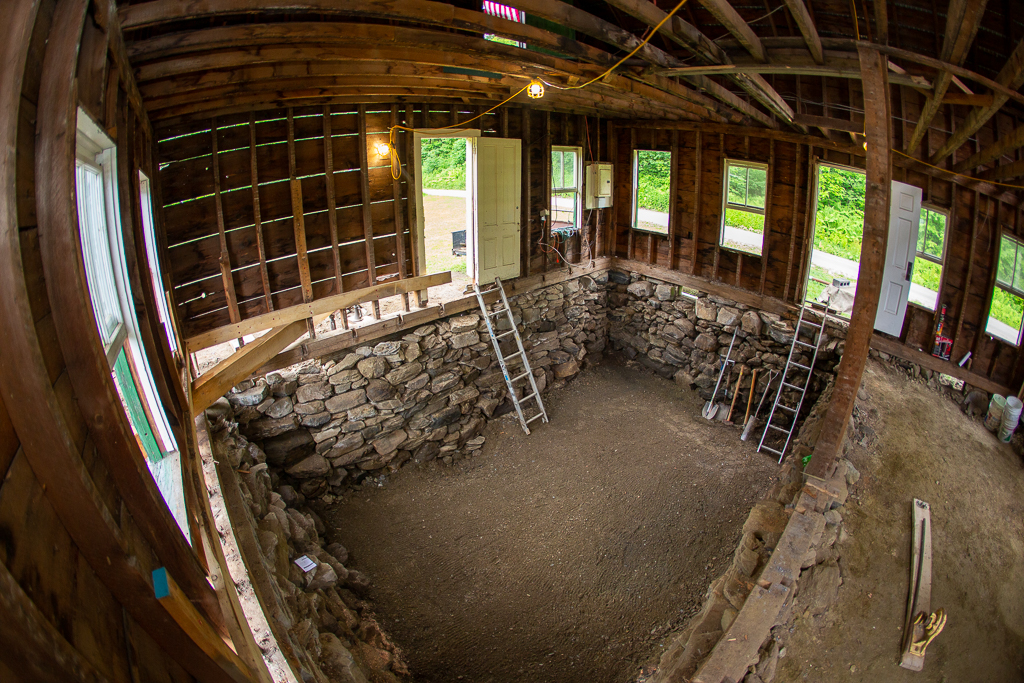
With all the large rocks out of the way, we spend more time smoothing the floor, removing smaller rocks, and digging out about two more yards of dirt. As we near completion, the builder drops off a rebar cutter (in photo above, lower right). Next step is to shore up these old stone walls with cement.

